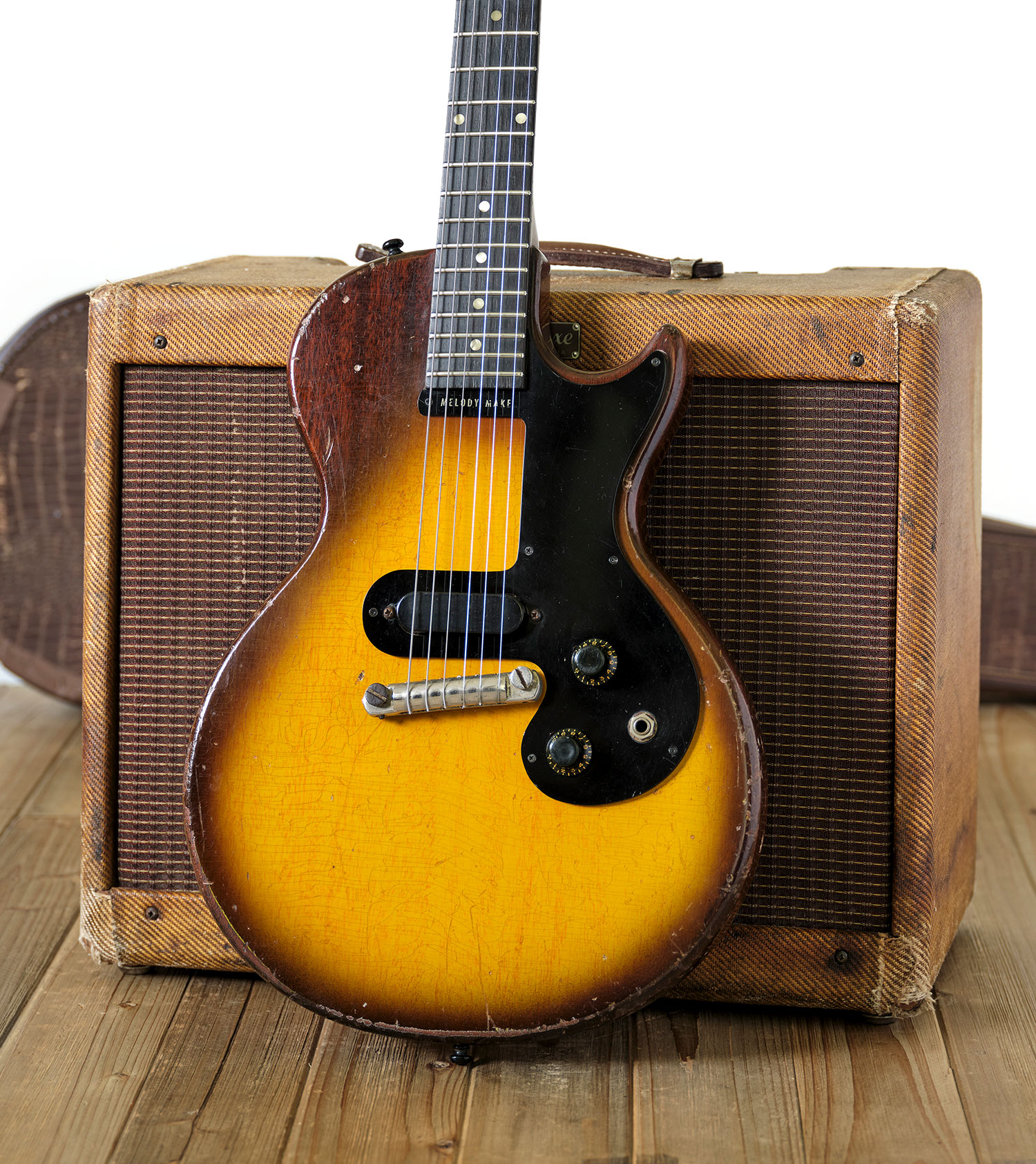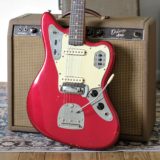Singlecut Melody Maker Details
- Make: Gibson
- Model: Melody Maker
- Year: 1959
- Color: Sunburst
- Configuration: single pickup set-neck electric guitar
- Nut Width: 1 11/16″
- Scale Length: 24 3/4″
- Neck Depth at 1st fret: 0.87″
- Neck Depth at 7th fret: 0.93″
- Neck Depth at 12th fret: 0.95″
- Potentiometer Codes: 29th week of 1959
- Pickup Resistance: 7.34k Ohms
- Weight: 6.20 lbs or 2.81 kg
- Accessories: original faux alligator skin case
Singlecut Melody Maker
Gibson introduced the new Melody Maker model in 1959, and the catalog declared it the “greatest value ever in a Solid Body electric with full-size neck and scale length”. Those wise words still hold true today. The lightweight mahogany singlecut takes you near Les Paul Junior territory at a fraction of the cost.
This 1959 Melody Maker is Gibson’s very first version of the guitar, featuring a wider pickup at the bridge, black control knobs, legendary 1959 neck profile, and an ink-stamped serial number starting with 9. In fact, the serial number is the lowest of any Melody Maker to pass through the shop. The wide pickup reads out at a strong 7.34k Ohms and delivers authoritative tone.
The body shows plenty of nicks, chips and scratches, more concentrated on the edges and back. The original sunburst lacquer finish has checked with age. The original frets have just been polished and you can see some fingernail wear in the Brazilian Rosewood fingerboard near the nut. Both hinges of the faux alligator chipboard case have been repaired, with some tape applied to the seams to keep it in service. Potentiometer codes date to the 29th week of 1959, and the original wraptail is still in place.
Priced at just $99.50 in 1959, the Melody Maker offers “expert workmanship and finest materials are used throughout to produce this top-quality low priced instrument”. This instrument was made in the same factory by the same people using the same materials as the more expensive guitars. That’s why this rare wide pickup Melody Maker still delivers tone, feel and value over 60 years later.




